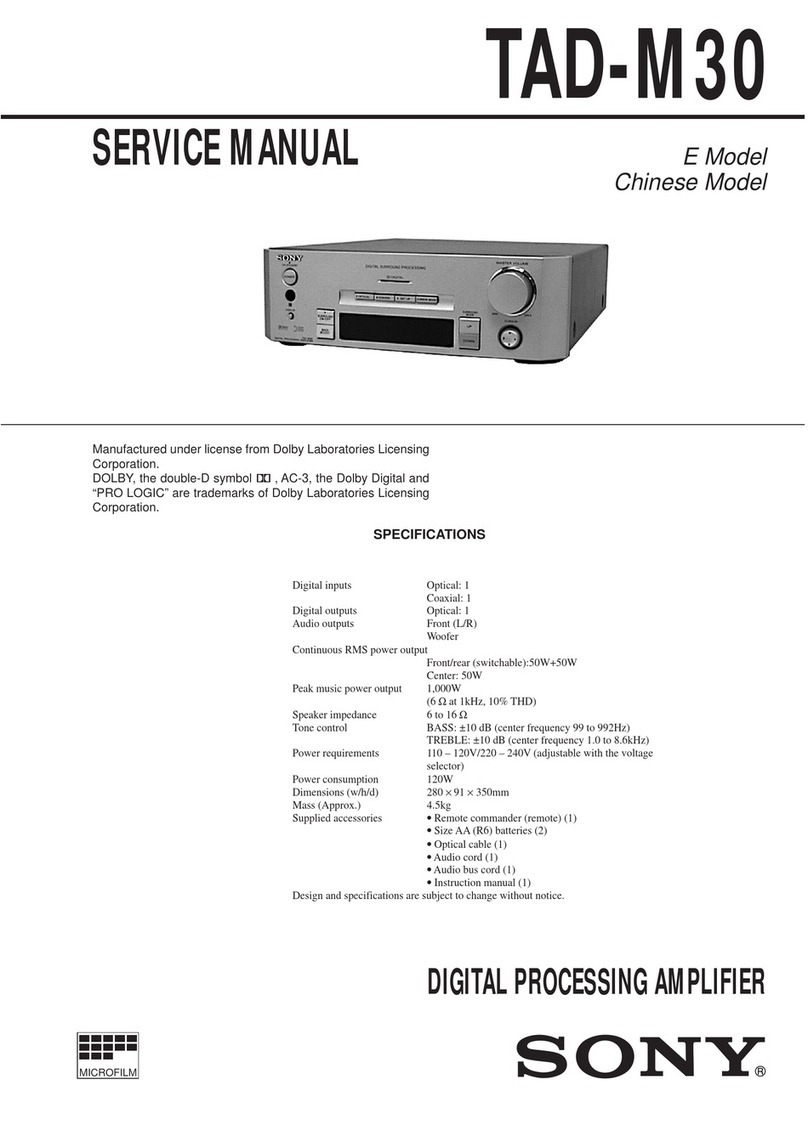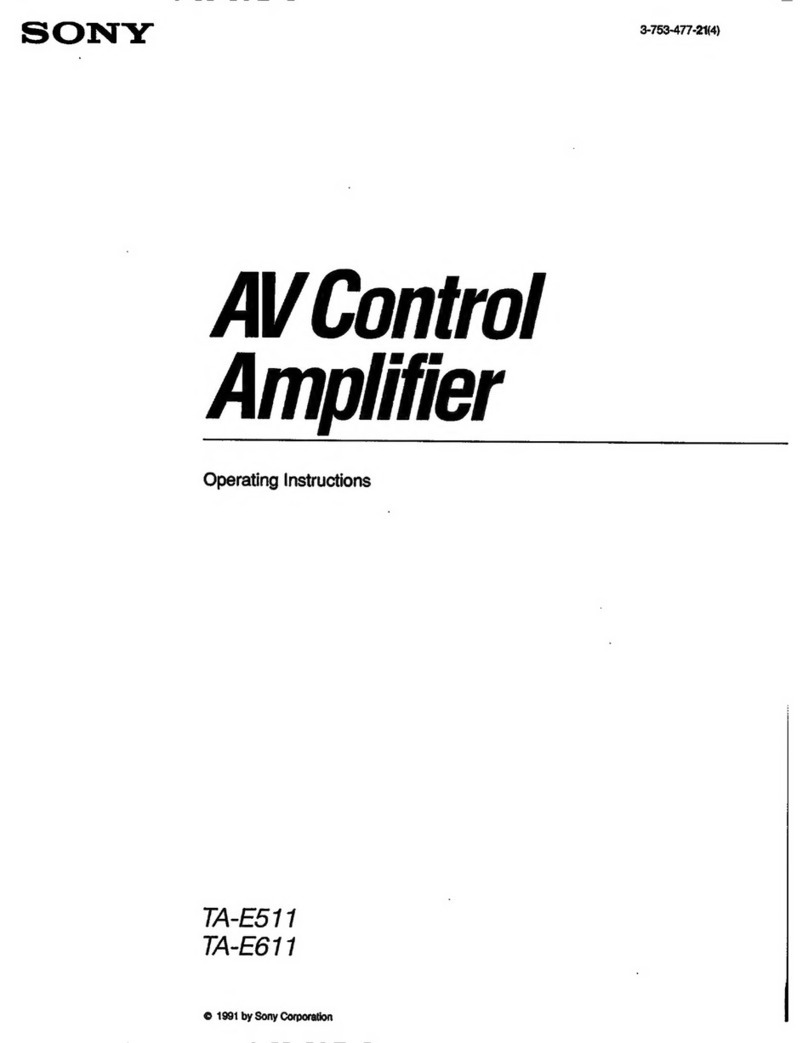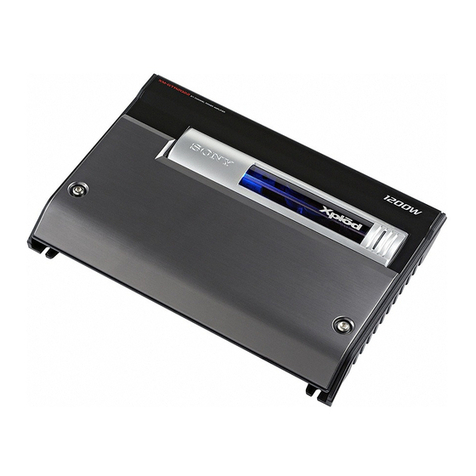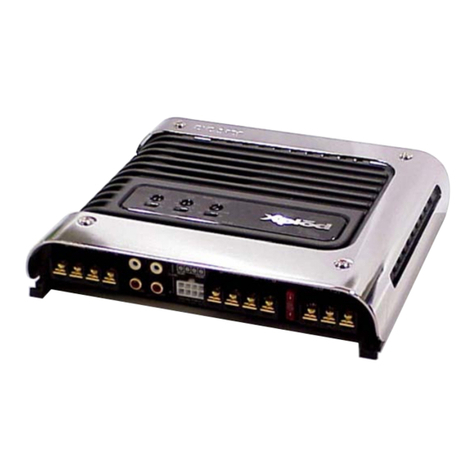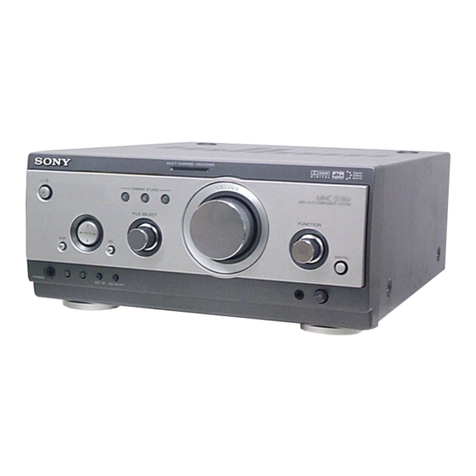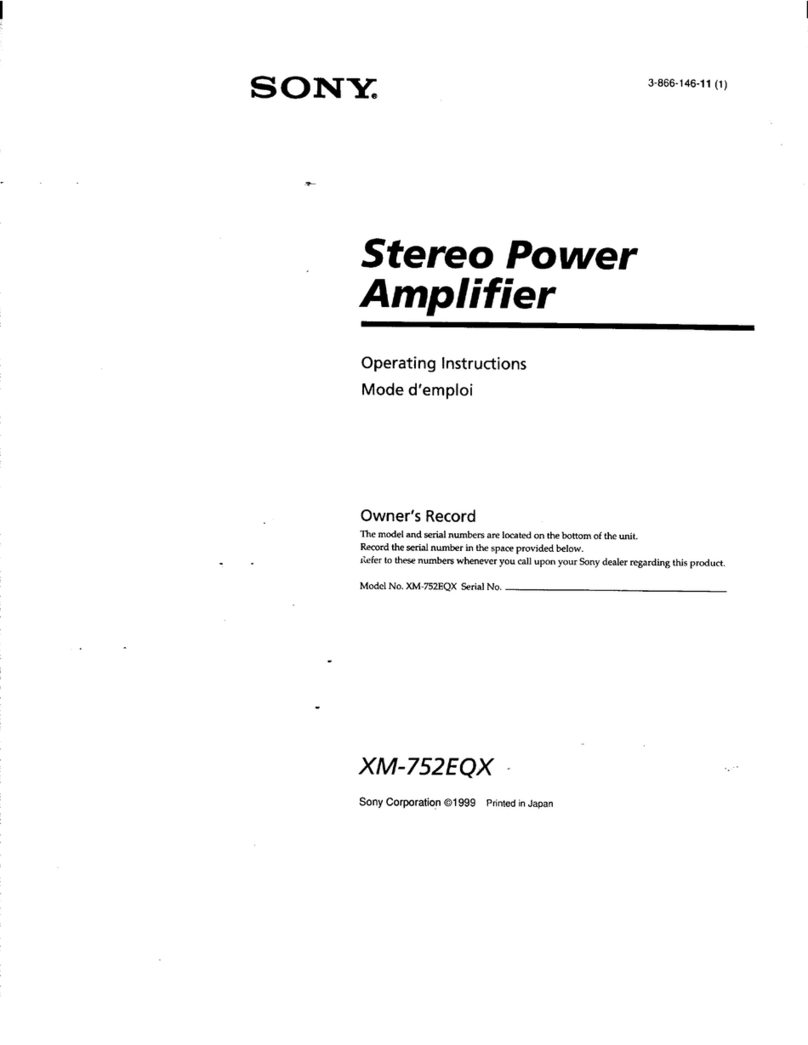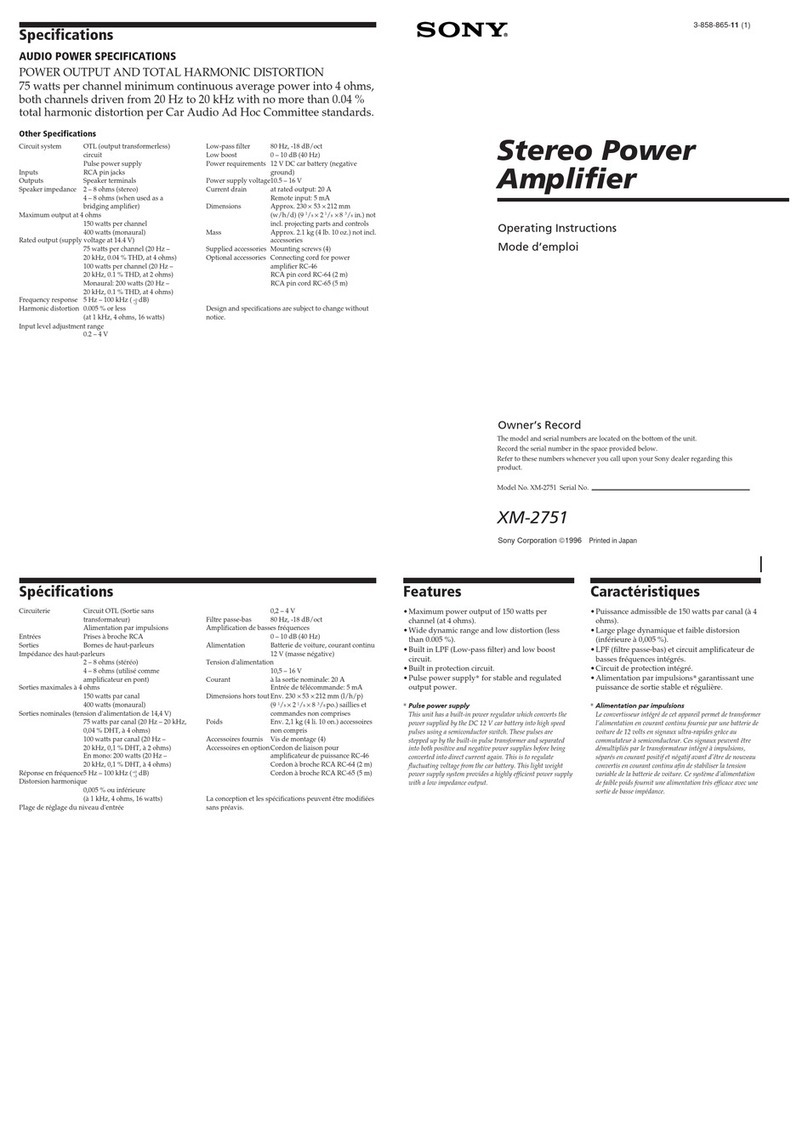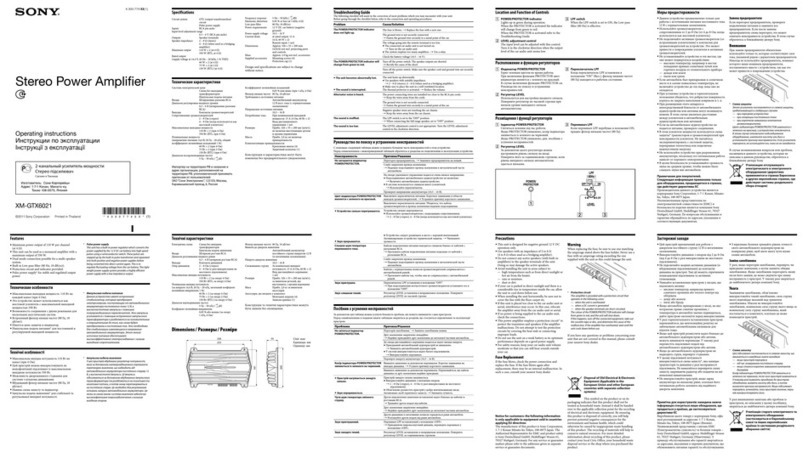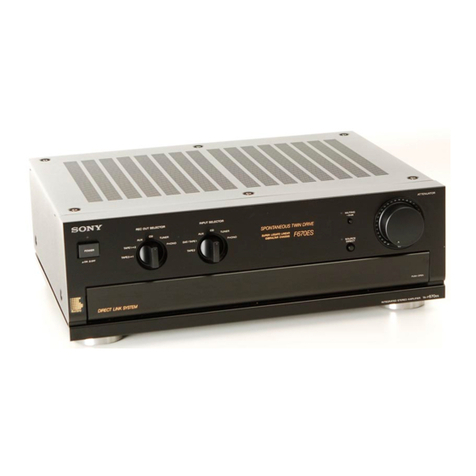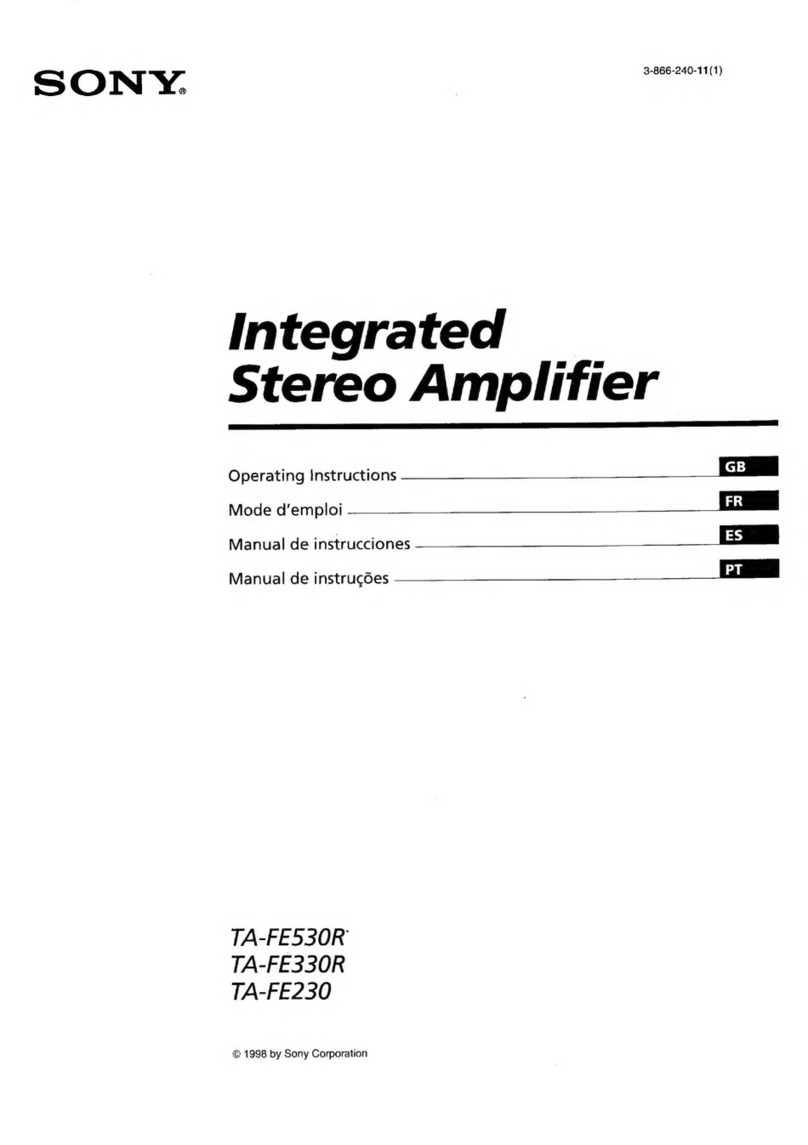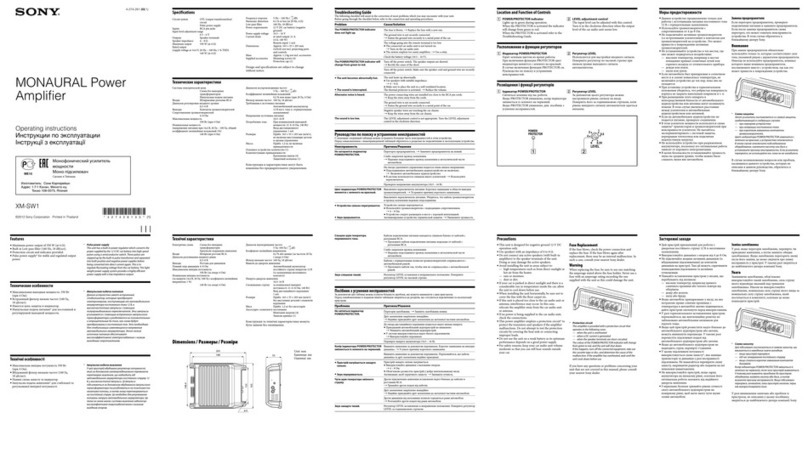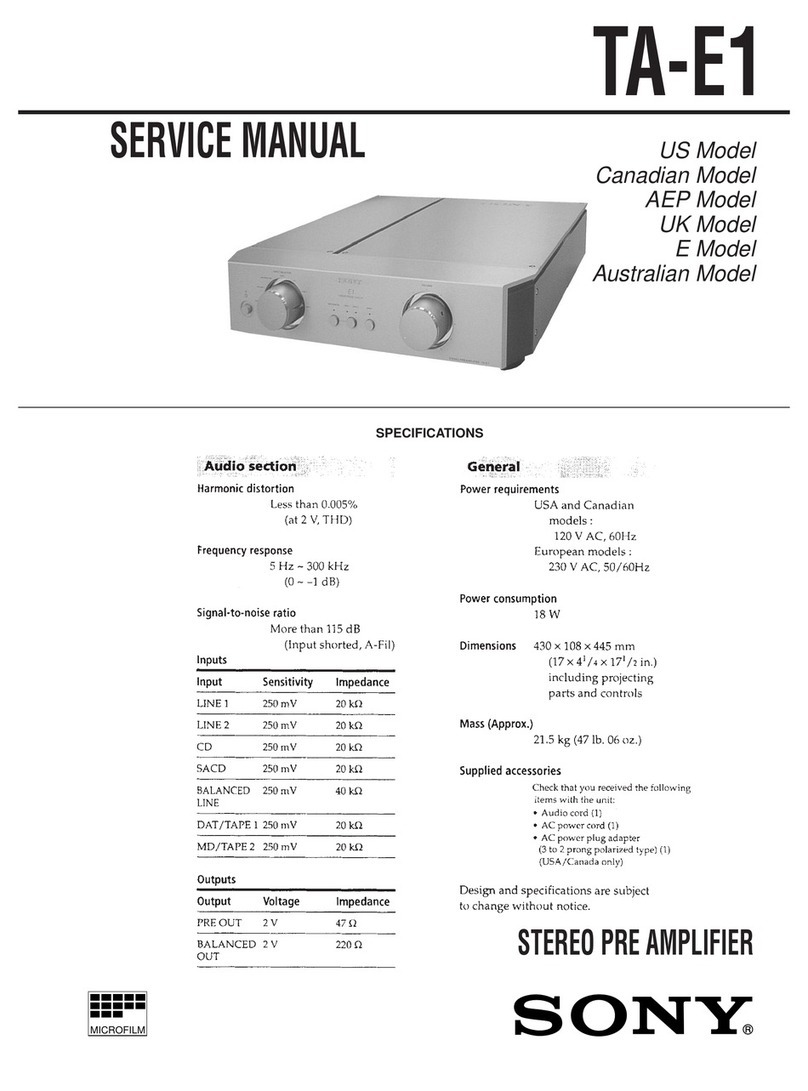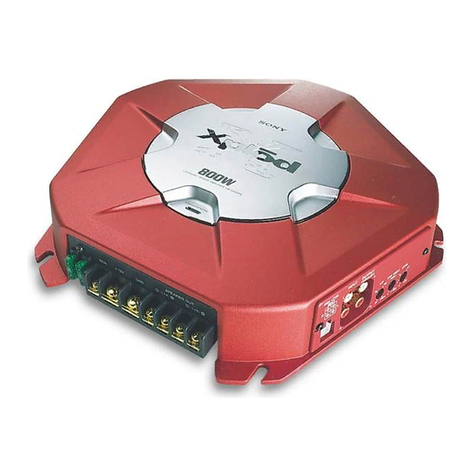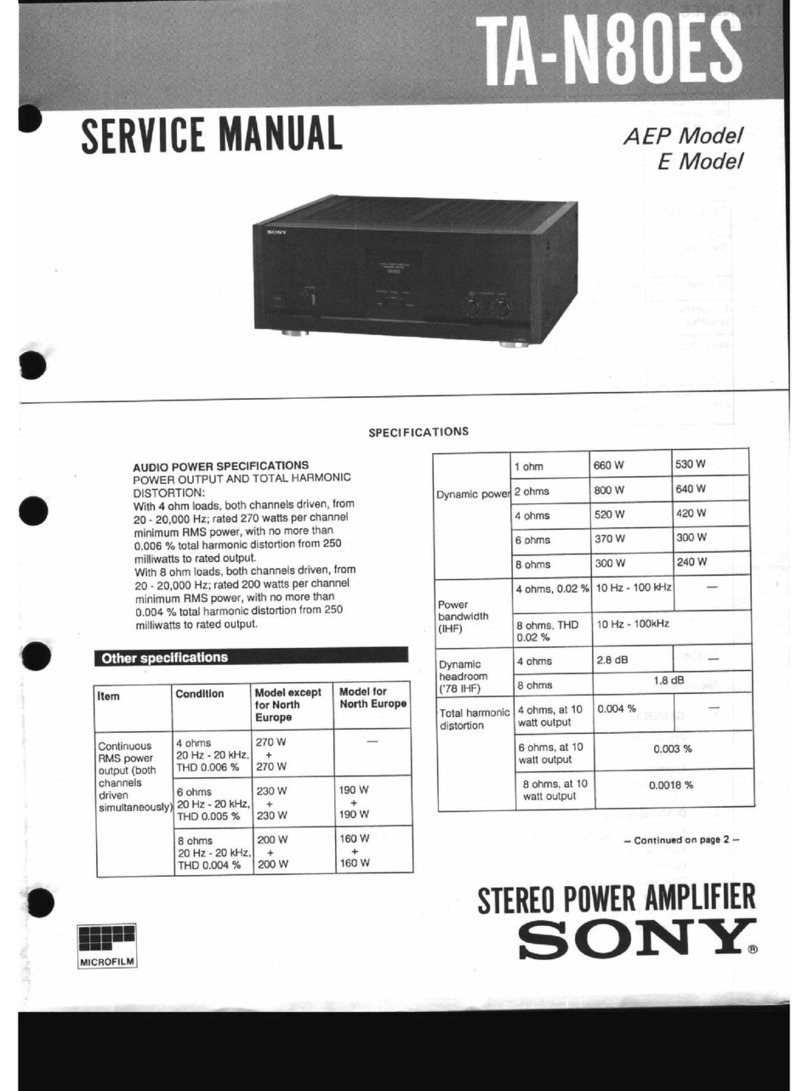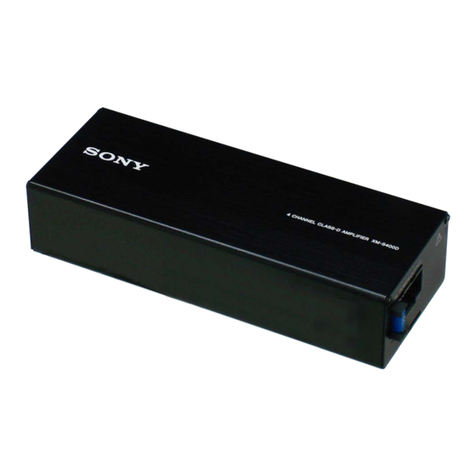
-TA-2000F
Section
Title
Page
SERVICING
NOTES
...0000.......c:cccsssseteeecsseeeseeeeeres
]
1.
TECHNICAL
DESCRIPTION
1-1.
Technical
Specifications
............c..6.
2.
1-2.
Detailed
Circuit
Analysis
.............
3~8
1-3.
Block
Diagram
................ceceeseeeeeeeeeeees
9
1-4.
Level
Diagram
.............cccccceeeeseeeee
sees
10
2.
DISASSEMBLY
AND
REPLACEMENT
PROCEDURES
2-1.
Tools
Required
............
cess
eceeeseoee
eee
11
2-2.
Hardware
Identification
Guide
.......
11
2-3.
Top
Cover
and
Front
Panel
Removal
.......ccccccseceeeesseseceseeeeeeees
11
2-4.
Front
Subchassis
Removal
..............
12
2-5.
Level
Meter
and
Meter
Lamp
Replacement
.........
eee
eeeceeee
eee
eee
12
2-6.
PC
Board
Removal
...............00
12~13
2-7.
Rear
Panel
Removal
............ccceeeeees
13
2-8.
Control!
and
Switch
Replacement
.............ccseeeeeeee
13~14
2-9.
Replacement
of
Components
Secured
to
the
Rear
Panel
by
Rivets
oo...
eee
eeeceeeseeeeeees
14
2-10.
Chassis
Layout
0.0.0...
seeceeeeeeeee
15
3.
ALIGNMENT
AND
ADJUSTMENT
PROCEDURES
3-1.
Test
Equipment
Required
...............
16
3-2.
Power
Supply
Voltage
Adjustment
seen
eet
idazs
16
3-3.
-Overall
Check
Preparation
..............
17
3-4.
Sensitivity
Measurement
.................
“97
3-5.
Level
Meter
(VU
meter)
Calibration
............cscssseeeeees
17~18
3-6.
Rated
Output
Measurement
............
18
3-7.
Harmonic-Distortion
Measurement
...........sesscessseeeneeeeee
18
TABLE
OF
CONTENTS
3-8.
Frequency
Response
Measurement
...............00seseees
18~19
Section
Title
Page
3-9.
Noise
Level
Measurement
bie
waves
19
3-10.
Tone
Control
Check
.............0.
19~20
3-11.
Filter
Response
Check
.......cccecee
20
3-12.
Crosstalk
Measurement
................00
20
DIAGRAMS
4-1.
Mounting
Diagram
—
“A”
PCB:
PHONO-1
Equalizer
Amplifier/Head
Amplifier
Board
~—
viieeeeessssceeceneeeeeereres
22~23
4-2.
Mounting
Diagram
—
“B’
PCB:
MIC
Amplifier/
PHONO-2
Equalizer
Amplifier
Board
—
..............
24~25
4-3.
Mounting
Diagram
—
“C”
PCB:
Flat
Amplifier-1/
Flat
Amplifier-2
Board
—
.....
26~27
4-4.
Mounting
Diagram
—
“D”
PCB:
Meter
Amplifier/
HEADPHONE
Amplifier
Board
—
o...eeeessssseseceeeseeeeee
28~29
4-5.
Mounting
Diagram
—
“E”
PCB:
Muting/Power
Supply
Board
—
............e
30~31
4-6.
Mounting
Diagram
—
“F”
PCB:
REC
OUT
Amplifier/
High
and
Low
Filter
Com-
ponent/
Turnover
Frequency
Changeover
Component
BO
ard
Bie
ictecagctetesndeess
4-7.
Mounting
Diagram
—
“G’
PCB:
OUTPUT
LEVEL
Changeover
Switch
Board
—
.......
34
4-8.
Schematic
Diagram
................
35~36
REPACKING
uu...
eecec
ccs
eceeeecesnnenerentenenes
37
EXPLODED
VIEW
............ccsseseeeeeee
38~41
ELECTRICAL
PARTS
LIST
..............
42~47
